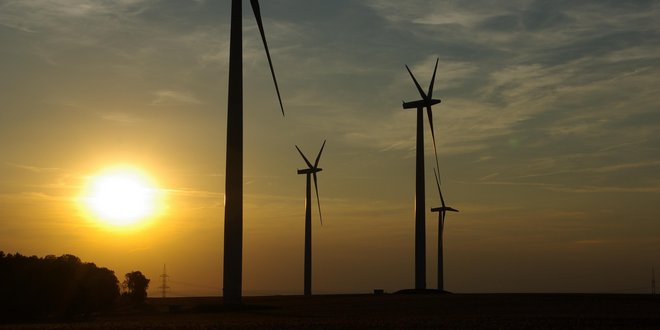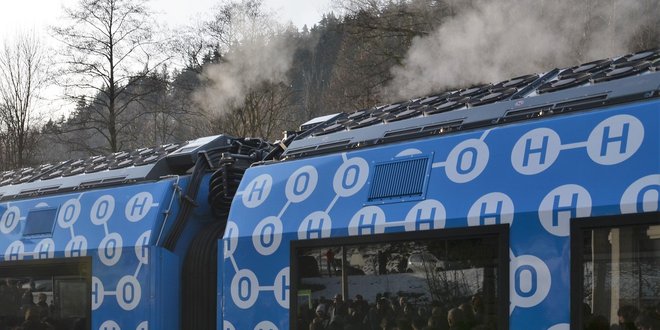Scope of Energy Research and Education
Research and Educational Challenges
Research and education related to energy issues has to address the challenges urban environments and whole societies will be facing over the next decades such as population growth, resource depletion and climate change. If the global sustainability targets are to be met, fundamental changes will have to happen to the urban environment as we know it today. This will need to encompass both the technical and the social infrastructures of our society. For the energy industry, this means that, in addition to increasing energy efficiency, above all the expansion of energy supply based on renewable energy sources is required. In this, hydrogen will be playing a vital role as a chemical energy store.
The following sections highlight why the energy challenges of 21st century need to be foremost met in the urban environment and why it is necessary to transform the current energy infrastructure to achieve this.
Why the Urban Environment as a Focus?
Whilst the most rapid urban development is currently appearing in emerging economies, mature urban environments as they are found in Europe will also require transformation. The resulting changes may serve as test bed for new approaches to urban sustainability internationally.
The United Nations estimate that, since 2009, for the first time in world history, more than half of the Earth's human population live in urban areas. Whilst Europe and Germany are already highly urbanised with 73% and 74% of the population residing in urban areas in 2010 respectively, cities in emerging economies and developing countries are continuing to grow rapidly (Figure 1) [1]. This rapid physical growth of urban areas or urbanisation is driven by people seeking to improve their basic standard of living, economic prospects and perceived opportunities for social mobility. Whilst there is some debate over the rate of migration (and its drivers, e.g. climate change), there is little doubt that all cities are experiencing significant challenges, placing the existing city infrastructure under considerable pressure for transformation. In Africa and Asia urbanisation levels are set to continue to rise from 39% and 44% at present to 58% and 64% by the middle of the century (2050) (Figure 1) [1]. This will put further strain on the existing city infrastructure, as a lot of this growth can be expected to happen in existing conurbations, resulting in the emergence of a number of new megacities.
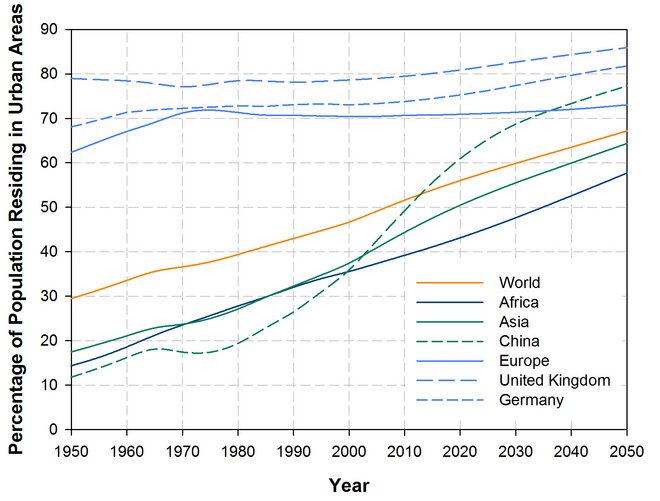
As illustrated schematically by Figure 2, urbanisation is imminently linked to an increase in global resource consumption. Cities, which only cover about 2% of the Earth's landmass, house half of the planet's population and consume 75% of the globally used resources [1,2]. One of the key future challenges of cities will therefore be the provision of the required water and food resources as well a reliable energy supply.
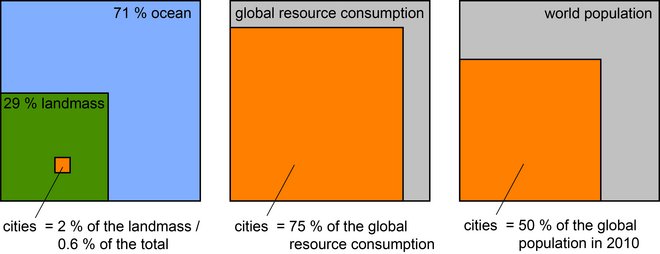
In many areas of the world the speed of urbanisation is highly unsustainable from an economic, social and environmental perspective. There is an urgent need to understand and address the challenges of urbanisation, importantly within a sustainable framework. This can only be addressed by seriously questioning how people will live and work in the future. Ultimately, this will also require thoughts about how to achieve an ecological footprint [3] that does not exceed the planet's potentials for resource renewal (Figure 3).
The Energy Systems research team at the Bauhaus-Universität Weimar aims to address these issues with a particular focus on energy provision in the urban built environment, particularly looking at a cross-sector integration of energy systems.

Why Transforming the Energy Infrastructure?
At present, in most places of the world energy supply and demand with their associated infrastructure are based on the availability of fossil fuel resources. However, these resources are finite with predictions for 'peak oil' and 'peak gas' typically estimating at best a few decades until extraction declines. Even new extraction methods such as fracking do not change the fact that fossil fuel resources are finite. This means that ultimately there is no other choice than considering the transformation of the present energy infrastructure to renewable resources and a more efficient use of energy.
Figure 4 highlights the global oil production statistics since 1965 as given by BP [4] in conjunction with predictions given by the Association for the Study of Peak Oil and Gas (ASPO) [5] which indicate a steady decline in production from 2010 onwards. This is in stark contrast to data released by the U.S. Department of Energy (DOE) Energy Information Administration (EIA) [6] which is also included in Figure 4 for the IEO2010 reference case. This scenario predicts a steady rise in production following the trend of the past 30 years. However, it needs to be mentioned that the EIA data also includes liquid biofuels (ethanol, biodiesel). This can be seen in the deviation between this data and the BP data for the historic production statistics. Nevertheless, the EIA data predicts that in 2035 the share of non-conventional sources which, besides biofuels, include oil sands, extra-heavy oil, coal-to-liquids, gas-to-liquids and shale oil [6] will only be about 12% of the total production. This clearly does not match the ASPO predictions. If one assumes the ASPO data to be correct for oil production from conventional sources and the EIA data to appropriately project the demand, then there would be a supply gap of 2350 million tonnes annually in 2030. If this were to be bridged with for example biodiesel from palm oil, a plantation area equal to 133% of the European Union's or 68% of Brazil's surface area would be required.
The above highlights the need to rethink supply and use of energy in urban environments in order to be prepared for the potential supply changes from fossil fuel resources. If this is undertaken in a timely fashion, it can help to sustain and transform the urban environment without representing an excessive burden for the people.
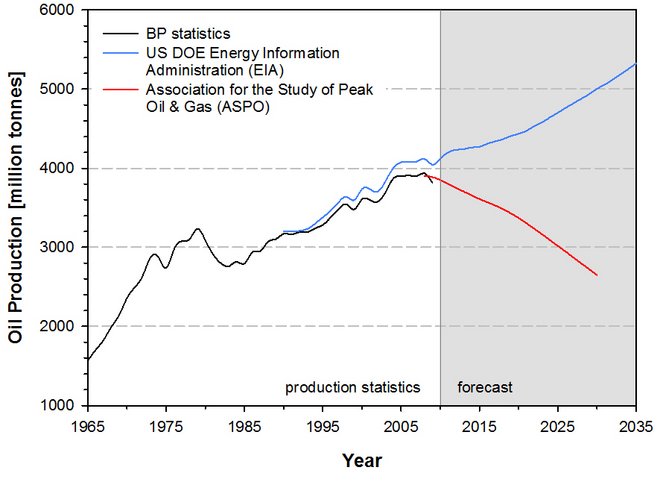
Future-proofing Energy Supply in the City
Energy consumption is closely linked to societal structures, the urban layout and the prevailing climate. However, for many regions of the world the climate is anticipated to change rather significantly over the next decades [7]. This may result in large pressures on energy demand, generation and distribution. Therefore, there is an increasing need for research in this area. For example, besides issues of urban water runoff and flooding, a change in rainfall patterns could have implications for electricity generation from hydropower. Therefore, energy research has to consider the potential impacts of a changing climate on the security of supply from renewable sources, in particular in an environment where decarbonisation through renewables is a policy target.
In order to understand the future energy and resource demands of the city it is essential to analyse climate change implications for the urban environment and its infrastructure. This also encompasses studies on how to address these challenges with sustainable design solutions, as urban layouts that exist today will need to be able to cope with these challenges to be viable for the future. Figure 5 highlights the importance of strategies for climate change adaptation for the example of Shanghai, China. Given the climate change projections of the HadCM3 climate model [8] under the A2 emissions scenario [9], weather data morphing for Shanghai using the CCWorldWeatherGen tool [10] shows monthly mean temperature levels by the end of the century that correspond to or exceed the current daily maximum values. This implies changes to water and comfort cooling requirements which may put significant strain on the existing infrastructure systems.
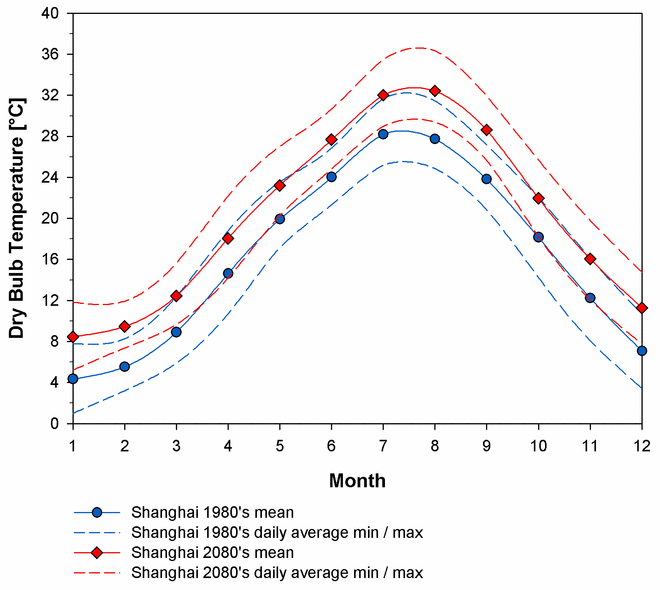
Ultimately the process of urban energy transformation needs to be embedded in a sustainable approach to resource use where the current linear process of ‘resource digestion’ of the city becomes a circular system (Fig. 6).
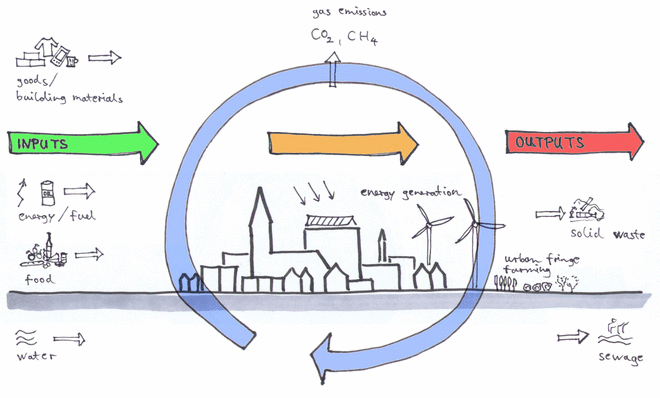
References
[1] United Nations, Department of Economic and Social Affairs, Population Division (2012). World Urbanization Prospects: The 2011 Revision, CD-ROM Edition.
[2] Girardet H (1999). Creating Sustainable Cities, Schumacher Briefings, No. 2
[3] Global Footprint Network, www.footprintnetwork.org
[4] BP (2011). BP Statistical Review of World Energy 2011
[5] The Association for the Study of Peak Oil and Gas (2009). ASPO-Ireland Newsletter No. 100
[6] U.S. Energy Information Administration (2010). International Energy Outlook 2010
[7] IPCC (2007). Climate Change 2007: The Physical Science Basis. Contribution of Working Group I to the Fourth Assessment Report of the Intergovernmental Panel on Climate Change, Cambridge University Press, Cambridge, UK and New York, NY, USA
[8] Met Office, Met Office Hadley Centre (2012). www.metoffice.gov.uk/climate-change/resources/hadley
[9] Nakićenović N, Swart R (2000). Special Report on Emissions Scenarios. A Special Report of Working Group III of the Intergovernmental Panel on Climate Change, Cambridge University Press, Cambridge, UK and New York, NY, USA
[10] University of Southampton (2009). CCWorldWeatherGen, www.energy.soton.ac.uk/ccworldweathergen


